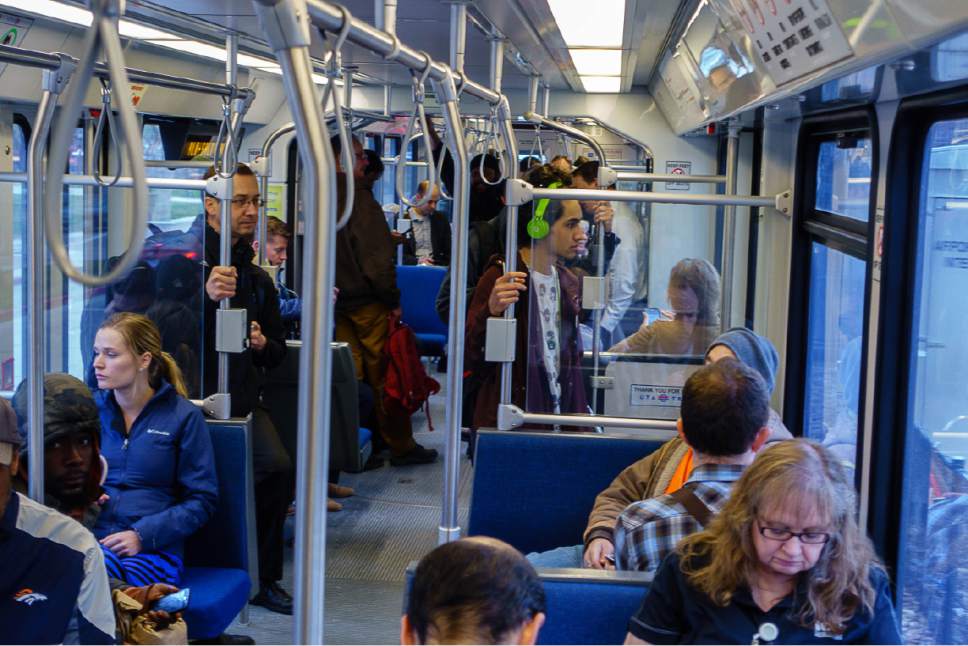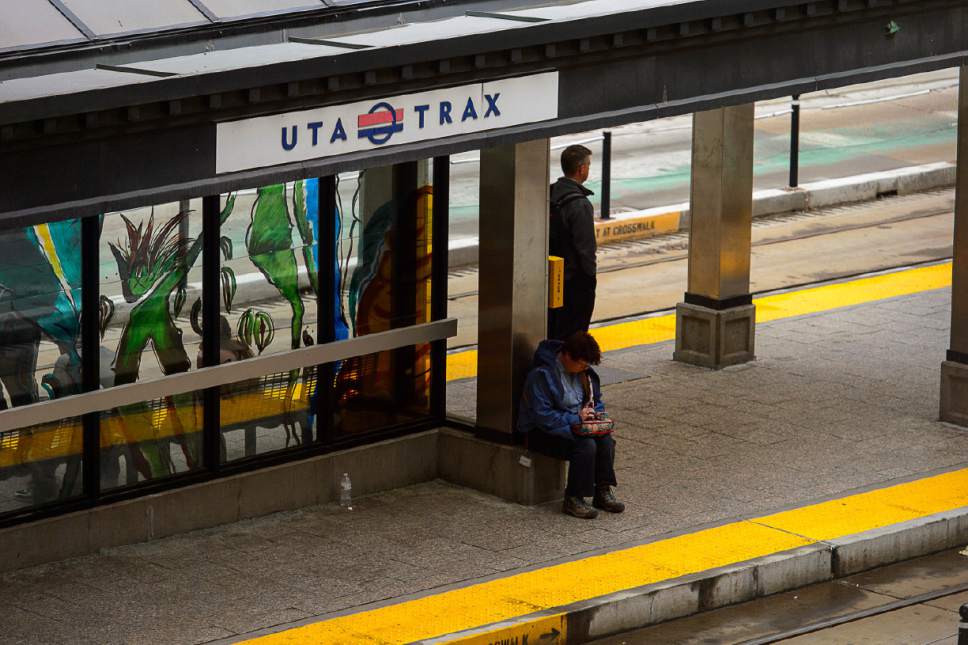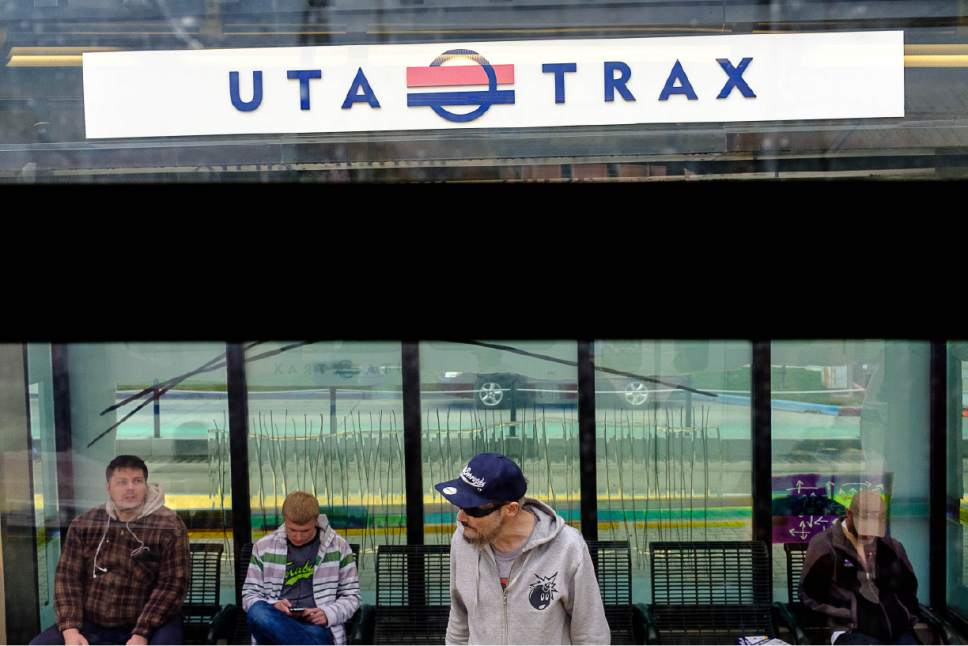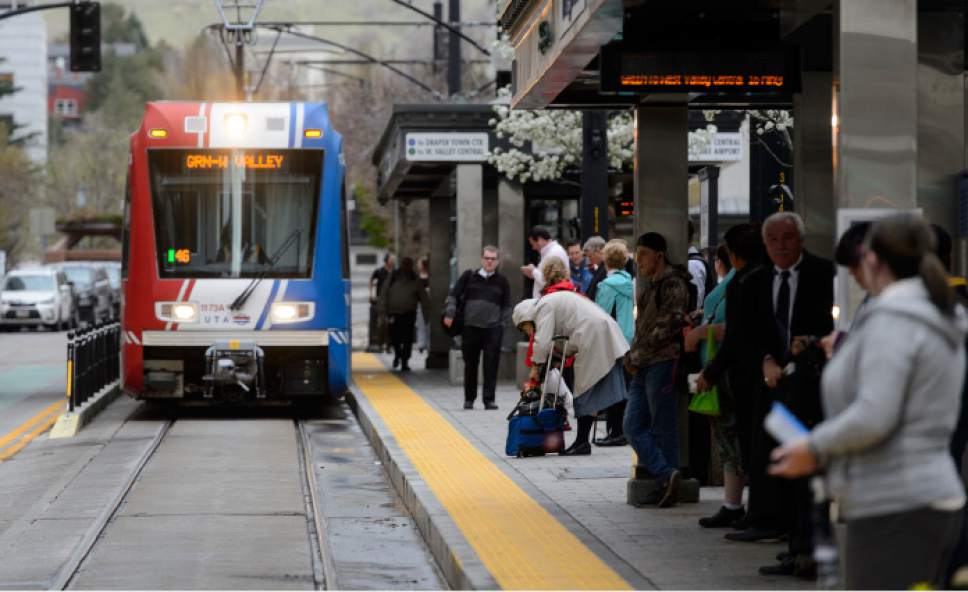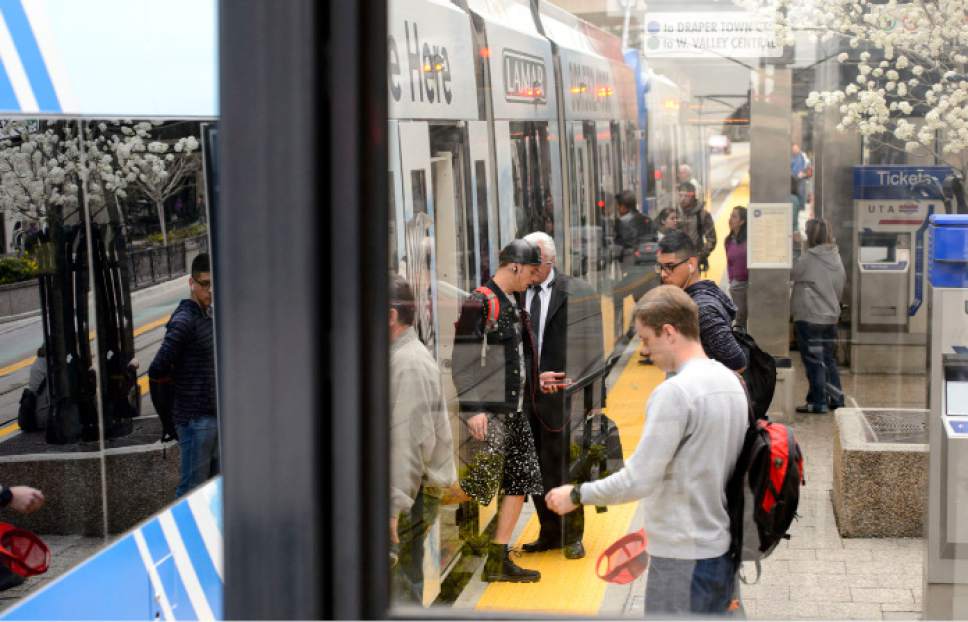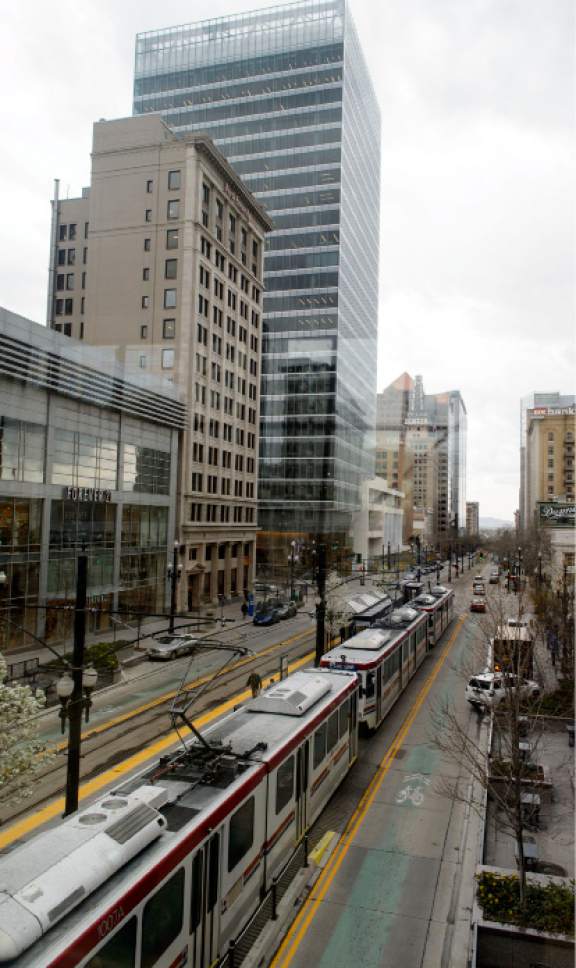This is an archived article that was published on sltrib.com in 2017, and information in the article may be outdated. It is provided only for personal research purposes and may not be reprinted.
Low gasoline prices last year may have made Utah drivers happy, but they led to decreased ridership on Utah Transit Authority buses and trains.
And fewer riders has resulted in smaller bonuses for UTA administrators — and prompted a new UTA board member to try Wednesday to kill off what he called a far-too-big bonus program. However, no other board member would second his motion.
UTA ridership last year dropped by 2.16 percent, the agency reported. It had 45.57 million boardings — defined as every time someone enters a bus or train. With transfers, a single trip could have multiple boardings.
"We've seen across the nation that transit ridership is down generally," UTA President and CEO Jerry Benson told the board. "Most communities attribute that both to low fuel prices and increased private auto sales."
In short, when gas is cheap, more people tend to drive than ride a bus or train.
The cheap fuel prices created a small silver lining for UTA. It spent only about half of what the agency originally budgeted for fuel: $11.4 million instead of $22.4 million.
But UTA also received about 5.5 percent less in fares than budgeted for the year: $50.5 million, instead of $53.3 million.
That news came as Benson reported how well the agency met its goals for 2016 — which determines bonuses for rank-and-file administrative workers.
Top UTA executives — regional managers and higher — opted two years ago to skip bonuses for two years amid controversy about bonuses that had been up to $30,000 a year each for some top brass. That action came before the vote on Proposition 1 to raise sales tax for transit and roads.
The UTA board figured Wednesday that the agency met 77.7 percent of its goals, so it will pay out 77.7 percent of available bonus money. That means $914,436 will be divided among 747 administrative workers, for an average bonus of $1,224 each.
The biggest goal missed was to increase ridership by 2.5 percent. When it dropped instead, that cost administrators 15 percent of their possible bonus money.
Brent Taylor, the mayor of North Ogden who is a new UTA board member, said the ridership decline, along with other public image problems, are among reasons to kill the bonuses.
He said incentive-payment programs at state agencies are less than $100,000 annually each — and most have more employees than UTA. He said the transit agency's program spends nine times as much.
"I don't think this is something that most public servants have," he said. "I believe this kind of a bonus program is really unprecedented."
He noted that one of the goals that determined bonuses was improving the public image of UTA — and the agency gave itself 100 percent of the possible points in that category. Taylor scoffed at that.
"There have been significant issues in the past year with open meetings" causing mistrust, he said. "We're only a few years removed from other things, like the two largest counties showing that they don't have trust in this agency by voting down Prop 1. That's the kind of thing that leaves the public scratching its head."
He added, "If we want to change the perception of this agency, it starts by changing our behavior." However, he could not persuade anyone to second his motion to end the bonus program — so it died.
The agency also said it partially hit some goals for attracting more grants and for work to overhaul and simplify its fare structure. It said it fully hit goals for work to increase public trust, hold down the tax subsidy per ride, expand transit-oriented development and improve transportation between home and transit stops.
Low fuel prices also helped the agency to fully achieve the goal to hold the subsidy per ride from sales tax to $4.23 or less. It was $4.16. Without the savings from low-cost fuel, the subsidy would have been $4.38 — and would not have met the goal.
As part of the reporting on efforts to improve public trust, the board also heard that polling by the agency shows that public opinion about the sometimes-controversial agency is improving slightly.
UTA released the answers to four questions included in an annual poll about its performance.
One asked people if they have a favorable or unfavorable impression of the agency. In a seven-point scale where "one" would be "very unfavorable" and "seven" would be "very favorable," the mean score was 4.93 — up a bit from 4.89 the previous year.
When asked if UTA makes good use of public funds, the median response was 4.45, up from 4.25 a year earlier.
When asked about how well UTA is responsive to the community it serves, the median score was 4.70 — essentially unchanged from 4.71 in 2015.
And when asked about opinions on how well UTA is held accountable to the public, the mean score was 4.21, up from 4.13 the previous year.
Benson also noted that UTA achieved an on-time reliability rate of 93.66 percent overall for the year — essentially a 19-out-of-20 chance that a bus or train will be on time.


